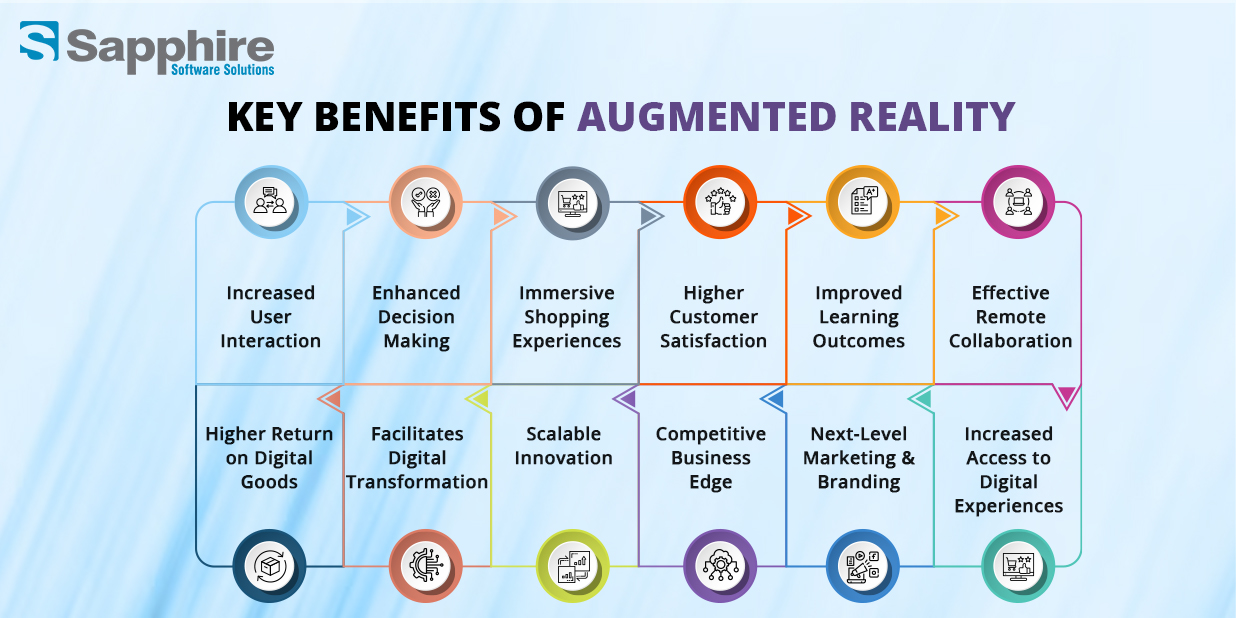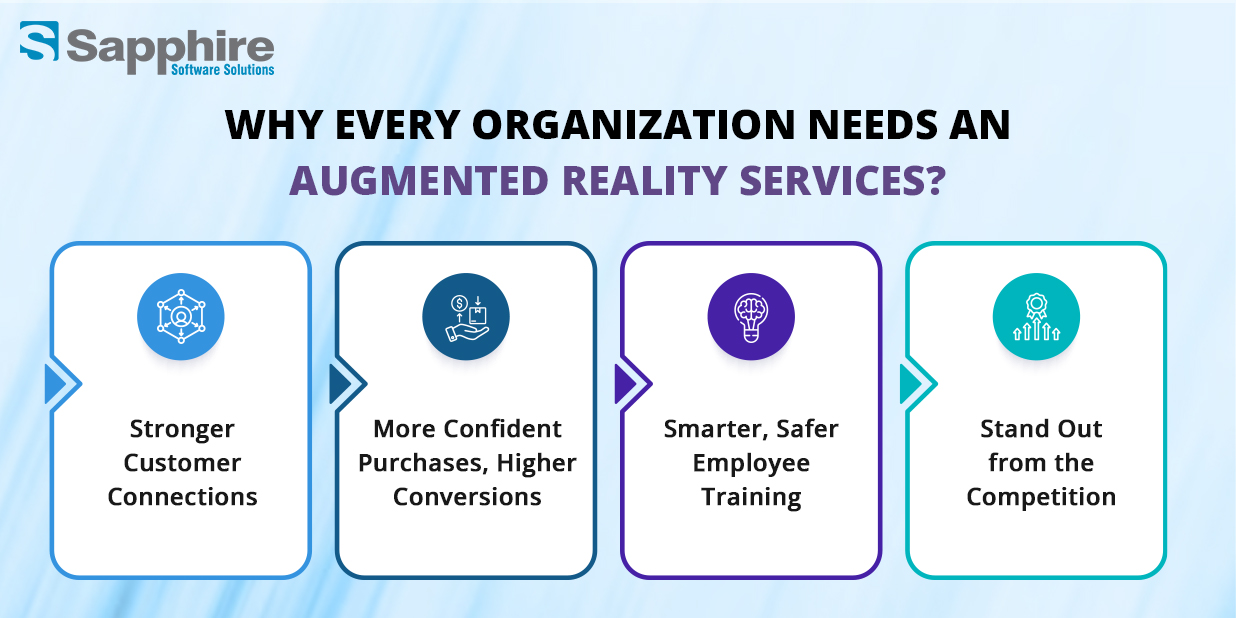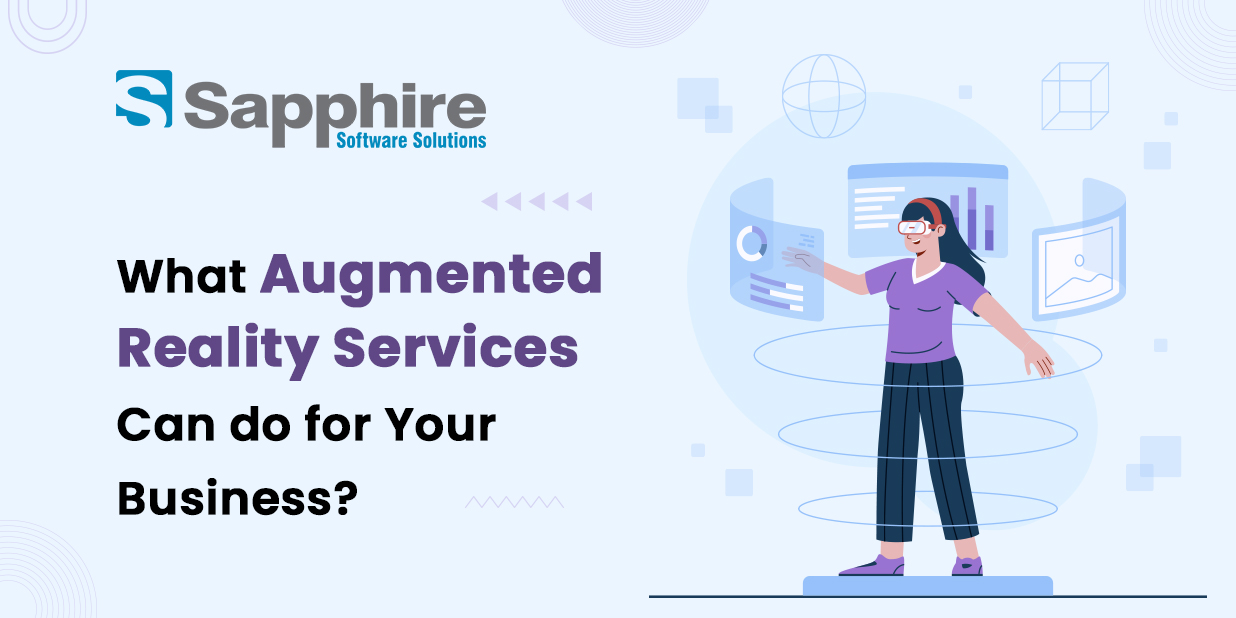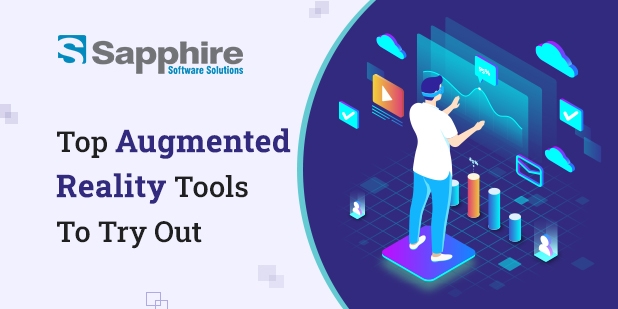What is Augmented Reality?
Though Augmented Reality (AR) can seem like something in science fiction, its beginnings are much older than one might assume. Augmented Reality Technology’s history is an intriguing mix of imagination, science fiction, and pioneering computer science. From its earliest conceptualized forms during the 1960s to the dynamic AR experiences one can access through smartphones today, Augmented Reality Models have been continually developing, changing everything from entertainment and education to industrial uses.
The Beginnings – 1960s to 1980s
The theoretical basis of Augmented Reality started with initial studies on human-computer interaction. Ivan Sutherland, an internet pioneer and computer scientist, in 1968 developed the first head-mounted display system. It was called the “Sword of Damocles” as it was hung from the ceiling and could render simple wireframe images, the first ever Augmented Reality System prototype.
Although the name “Augmented Reality” hadn’t been invented yet, Sutherland’s device presented the core concept: merging virtual images with reality.
In the 1970s and 1980s, development was more theoretical than business-oriented. Computer scientists tested different Augmented Reality Software methodologies, mainly for military, aviation, and medical visualization uses.
History of Augmented Reality:
Augmented Reality, traditionally a technology of the future, has roots dating back to the 1960s in Ivan Sutherland’s groundbreaking creation of the first head-mounted display system known as the “Sword of Damocles.” This system serves as the foundation for what we now call an Augmented Reality System, although at that time the concept wasn’t yet called by this name. In the 70s and 80s, most of the Augmented Reality Technology was for military and research purposes, with researchers seeking ways to integrate computer-based information into the real world.
- It was not until 1990 that the very words “Augmented Reality” were coined by Tom Caudell as he was developing display systems at Boeing to assist employees in the workplace in the building of aircraft—a pioneering move that brought AR from the theoretical stage into existence. Shortly after, Louis Rosenberg built the Virtual Fixtures system for the United States. Air Force, integrating physical movements with virtual superimpositions and augmenting the functional capabilities of Augmented Reality Models even more.
- The 2000s experienced a tipping point, with the advent of Augmented Reality. Online tools like ARToolKit allowed developers to develop browser-based AR applications, which further influenced the building of Augmented Reality Websites. The growth gained pace with the arrival of smartphones, GPS, and camera-equipped mobile phones, making Augmented Reality Software ubiquitous. The tipping point came only with Pokémon GO in 2016, which made Augmented Reality AR mainstream, showing everyone how interactive digital overlays were compatible with the real environment, thereby proving the scalability and acceptability of the technology. Meanwhile, large technology companies like Apple, Google, Microsoft, and Facebook joined the battle with the launch of AR development tools like ARKit and ARCore, along with devices like HoloLens, enabling mass adoption of more advanced AR applications.
- These advances set the stage for widespread AR use across industries, particularly in education, where Augmented Reality in Education began transforming classrooms by allowing students to learn virtual anatomical models, ancient artifacts, and more with interactive apps.
Use of Augmented Reality Models in AR Applications:
The strength of Augmented Reality does not only depend on the capacity to integrate digital information into the real world, but also on the quality and depth of the Augmented Reality Models that lend the combined effort meaning, dynamism, and interactivity in a few different industries. At the core of any Augmented Reality Application are these 3D or animated models, which serve as the visual and functional elements users tap into, ranging from realistic human anatomy simulations in medical training to interactive product demos in retail and immersive characters in gaming environments.
Such Augmented Reality Models are usually designed with sophisticated 3D modelling tools and are rendered in real-time so that they can be overlaid transparently over the view of a user’s world through Augmented Reality Technology. For instance, in online shopping, a user shopping on an Augmented Reality Site for furniture can see a realistic sofa model, spin it, scale it, and virtually “set” it in their living room with their smartphone or tablet.
- These interactive features, usually developed with Augmented Reality Software-supported frameworks such as Unity, Vuforia, or WebAR, should be light, responsive, and accurate on different devices. All this interaction significantly improves user engagement and product familiarity.
- In Augmented Reality in Education, these models extend learning beyond textbooks, enabling students to engage with molecular structures, planets, or biological systems in a three-dimensional, hands-on manner that speeds comprehension and retention. Likewise, in architecture and real estate, Augmented Reality Models enable customers to see complete-scale 3D images of buildings or interiors before a single brick is placed, reducing the necessity for expensive revisions and greatly simplifying approval procedures. Furthermore, these models are frequently augmented with Augmented Reality features such as sound, user gestures, or voice commands to provide rich storytelling in brand experiences or training modules.
- The complexity of Augmented Reality Models has increased as AI and ML have advanced, resulting in adaptive AR interaction responsive to the user input, location, or behaviour in real-time. Companies engaging with an Augmented Reality App Development Company typically depend on a competent Augmented Reality Developer to build, develop, and fine-tune such models for certain platforms and applications, be it Augmented Reality Online shops, brick-and-mortar stores, or corporate training programs. For those with limited in-house capability, Augmented Reality Services outsourcing guarantees access to state-of-the-art tools, frameworks, and design workflows as well as faster development time. In advertising, AR models are important for the visualization of products, enabling customers to try out cosmetics, clothes, or accessories on themselves through camera-based filters and simulations, which tends to result in increased conversion rates and reduced return rates.
Key Benefits of Augmented Reality:

1. Increased User Interaction:
Augmented Reality provides highly interactive and immersive experiences. Whether users are virtually trying on garments or students are applying Augmented Reality in Education, AR enhances emotional involvement and engagement.
2. Enhanced Decision-Making:
Utilizing Augmented Reality Models within apps, companies can provide real-time overlays of guidelines, information, or simulations. For instance, Augmented Reality Software in healthcare or manufacturing improves accuracy and minimizes mistakes.
3. Immersive Shopping Experiences:
With applications such as an Augmented Reality Website, consumers can visualize furniture in their own home or virtually try on makeup, more confidently they’ll make the right purchase, and lower return rates.
4. Higher Customer Satisfaction & Conversion:
AR converts browsers to buyers. A demo app or AR campaign can offer instant previewing and reduce friction from the purchase process.
5. Improved Learning Outcomes:
In learning, Augmented Reality in Learning enhances understanding by converting theoretical concepts into interactive, 3D lessons, like a hovering heart in biology or architectural designs in real-time.
6. Effective Remote Collaboration:
Global teams can work together on product development, infrastructure planning, or digital marketing campaigns using collaborative Augmented Reality Models—without sitting in the same space.
7. Increased Access to Digital Experiences:
The Augmented Reality System has the potential to enhance accessibility for people with disabilities by employing voice, visuals, and context-aware content overlays to make interaction and navigation easier.
8. Next-Level Marketing & Branding:
Companies that employ Augmented Reality Services in their marketing campaigns leave lasting impressions. Interactive billboards, try-before-you-buy mobile apps, and AR packaging enhance brand recall and interaction.
9. Competitive Business Edge:
Businesses that collaborate with a seasoned Augmented Reality Developer or Augmented Reality App Development Company are more likely to innovate and dominate their market.
10. Scalable Innovation:
With decreasing costs of Augmented Reality Technology, small and large businesses alike can now experiment and add AR features that were previously budget-busting.
11. Facilitates Digital Transformation:
With tailor-made Augmented Reality Software, companies can transform their processes, training programs, and customer interface, future-proofing their operations.
12. Higher Return on Digital Goods:
Whether it’s home tours, training simulations, or AR-fueled games, AR apps have demonstrated excellent returns on investment when executed well.
Future of Augmented Reality System:-
A. Mainstream Integration Across Devices:
The Augmented Reality System is poised to become a standard feature of smartphones, tablets, and wearables. With the latest sensors and processors, these devices will enable effortless AR functionality without the necessity of external hardware.
B. Rise of Web-Based AR Experiences:
With Augmented Reality Online platforms, customers will no longer have to download standalone apps to get AR. This browser-based AR will accelerate greater adoption and engagement, especially in retail and marketing.
C. Growth in Enterprise Solutions:
Increasing numbers of industries are embracing the Augmented Reality Advantages for training, maintenance, healthcare, and collaboration. Enterprises will adopt Augmented Reality Technology more frequently to improve operational effectiveness and staff productivity.
D. 5 G-Powered Immersive Experiences:
5G network deployment will minimize latency, allowing ultra-responsive AR interactions. Augmented Reality Models will become more realistic and operational in real time, making everything from remote support to interactive learning better.
E. Smarter, AI-Powered AR Systems:
AI and AR convergence will result in smarter systems that can understand user behavior, environment, and context. Next-generation systems will dynamically personalize experiences on Augmented Reality Websites and apps.
F. Increased Adoption in Training and Education:
Augmented Reality in Education will further develop, bringing more interactive and gamified learning devices for a wide range of learners, especially for STEM, healthcare, and vocational skill learning.
G. Increased Demand for Development Services:
As applications of AR grow, so will the demand for professional Augmented Reality App Development Firms and experienced Augmented Reality App Developers to create, develop, and support high-performing AR applications for industries.
Why Every Organization Needs Augmented Reality Services?

Stronger Customer Connections:
With today’s digital-first reality, customer focus is temporary. That’s where Augmented Reality Services come into play. They enable brands to create extremely engaging, immersive experiences beyond flat videos and images. Picture a consumer trying on clothes remotely at home or looking at how that new sofa will fit in their living room using their phone screen—AR transforms those mundane moments into engaging experiences customers recall and cherish.
More Confident Purchases, Higher Conversions:
When individuals can view precisely what a product will resemble or function in their environment, they are much more likely to click “purchase.” That’s the magic of incorporating Augmented Reality Technology into your mobile app or online store. A properly implemented Augmented Reality Website for a furniture retailer, for instance, can do away with uncertainty, curtail returns, and finalize sales quicker by providing consumers with a true-to-life preview of their item.
Smarter, Safer Employee Training:
AR isn’t a sales gimmick—it’s also transforming employee training. Healthcare, aviation, and manufacturing sectors are employing Augmented Reality Models to replicate actual situations with no actual risk. It makes hands-on training more available, less costly, and much more effective.
Stand Out from the Competition:
It takes more than mere effort to stand out in a busy market. But brands that use Augmented Reality Software reflect innovativeness and visionary thinking. Whether an uncommon in-store AR experience or an internet campaign through Augmented Reality Online, these products enable companies to etch out a differentiated brand identity that people see and discuss.
How to Hire an Augmented Reality Developer?
Hiring the right Augmented Reality Developer is a crucial step in bringing your immersive vision to life. Start by clearly defining your project scope—whether it’s for an interactive Augmented Reality Website, a mobile app, or an enterprise-grade training tool. Look for developers with a proven portfolio in Augmented Reality Services, especially those experienced with AR platforms like ARKit, ARCore, Vuforia, or Unity 3D. Don’t just evaluate technical skills; assess their creative problem-solving, ability to work with Augmented Reality Models, and knowledge of UI/UX design. If you’re short on in-house expertise, partnering with an experienced Augmented Reality App Development Company can ensure smoother execution, quicker turnaround, and ongoing support. Also, make sure your developer understands how Augmented Reality Technology fits into your industry—whether it’s retail, education, healthcare, or real estate. The right hire can transform an innovative idea into a practical, business-boosting AR solution.
Role of an Augmented Reality App Development Company in Digital Transformation:
1. Strategic Technology Integration:
A seasoned Augmented Reality App Development Company is instrumental in aligning AR innovations with your business objectives. Through understanding your market and goals, they incorporate Augmented Reality Technology in a manner that augments digital strategies, rather than intruding upon them.
2. Personalized AR Solutions:
Each company is distinct, and these firms develop customized Augmented Reality Software to suit. Whether an Augmented Reality Website for online shopping or training software for manufacturing, they tailor AR models for maximum applicability and effectiveness.
3. AR Framework Expertise:
An experienced development agency uses platforms such as ARKit, ARCore, Unity, and Vuforia to create robust and resilient apps. Their technical expertise makes your Augmented Reality Services scalable and future-proof.
4. Smooth User Experience (UX):
UX is the core of digital transformation. These agencies specialize in maximizing the Augmented Reality UI/UX to deliver intuitive and immersive experiences that prompt greater engagement and adoption.
5. Industry-Specific Deployment:
From Augmented Reality in Education, retail, and real estate to healthcare, the appropriate AR development partner is aware of regulatory hurdles and user requirements and develops compliant and effective solutions.
6. Full Life Cycle Development Process:
From ideation and prototyping through deployment and upkeep, they provide full-service offerings. This allows companies to roll out AR apps rapidly without having to staff up fully internally.
7. Quick Innovation & Market Flexibility:
With changing Augmented Reality Online trends, these firms keep your AR solutions current and competitive, providing qu, ck adaptation to market changes in the digital space.
8. Cost Effectiveness & ROI:
With an expert team on board, overhead on R&D is minimized, and time-to-market is accelerated, generating high returns on your investment.
Conclusion:
Today’s fast-evolving digital world has seen Augmented Reality evolve from a notion of the future to an essential business enabler that is reshaping the way we work, learn, shop, and connect. We started by looking at what Augmented Reality is, with the comprehension of it combining digital contents such as images, sound, and 3D models into our physical worlds, enhancing daily experiences in a natural, interactive fashion. From the placement of virtual furniture to imagining complex anatomy during medical training, the practical application of Augmented Reality Technology is extensive and continually expanding.
Looking at the short history of Augmented Reality, we can understand how AR transitioned from military and academic research labs to commercial applications with a boost from developing mobile computing and cloud-based platforms. From its beginning in head-mounted displays to its current high-end Augmented Reality Systems, the history of AR portrays the cutting-edge spirit of contemporary technology.
The Augmented Reality benefits are just as impressive. From increased customer interaction and better training procedures to brand uniqueness and cost reduction, Augmented Reality Benefits provide concrete value. Retail, education, healthcare, and manufacturing are already enjoying the benefits of immersive, interactive AR solutions. We then inquired, Why does each organization require Augmented Reality Services? The reason is value and flexibility. Companies utilizing Augmented Reality in Education, retail, or customer service are discovering new methods of communicating, teaching, and selling, building stronger, more resonant experiences that drive revenue and loyalty.
Execution-wise, the question is how to recruit an Augmented Reality Developer in the right way. You need to get experts who possess technical expertise, domain knowledge, and innovative thinking—people who can materialize a static concept into a living, engaging solution. But above all, you want someone who can get your business and take it to the next level with innovative AR solutions.
In conclusion, Augmented Reality is not a trend—it’s a potent means of business development, learning, training, and customer interaction. Whether you are a start-up or an international corporation, adapting to Augmented Reality Services today can put your company ahead of the game tomorrow. If you want to revolutionize your brand with immersive experiences, getting the right Augmented Reality Developer or working with a reputable Augmented Reality App Development Company is the key to a smarter, more interactive tomorrow.






































